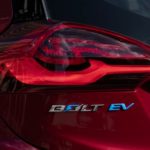Seeing that stylish Mustang Mach-E zip past you on the streets may have gotten you wondering if an electric vehicle could be a good next step for you. Of course, before you even explore this avenue, you’re bound to research endlessly on the internet, googling everything from “used EVs for sale near me” to “EV maintenance” because, honestly, how exactly do you maintain these vehicles? After all, they don’t have an engine; they have a battery pack, which is… something else entirely. And what about fluids? Are there any? Seriously—are there fluids in an EV?
If the world of EVs is foreign to you, you’re certainly not alone. Many drivers are intrigued by the growing selection of battery-powered vehicles and what they can bring to the daily ride. For everything you need to know about EV upkeep, let’s dive into the basics…
Maintaining Your Battery
The battery is the heart of any electric vehicle, which means that maintaining it properly is crucial to your vehicle’s performance and your battery’s longevity. How long your EV battery will last depends on where you live, with batteries lasting up to fifteen years in moderate climates and up to twelve years in areas that frequently experience extremely hot or cold temperatures.
Other than your area’s climate, there really isn’t much maintenance that needs to be performed on an EV battery, which means less trips to the service center and less money being shelled out for routine maintenance.
Although maintenance isn’t a big deal for EV batteries, there are some best practices in place to ensure you’re getting the most out of your battery as possible. Charging plays an integral role in battery longevity, and experts recommend managing your usage of Fast Charging stations and not turning to these options frequently.
Although convenient, Fast Charging stations can degrade your battery’s overall capacity at a much faster rate, which means that it won’t last as long as you anticipate. It’s also recommended not to charge your battery fully (to 100%) or let it run out completely (to 0%), which can also degrade your battery more quickly. Fortunately, most automakers put a limit on charging so that EVs won’t charge to 100%, thus eliminating this fear.

Checking Fluid Levels
Many drivers wonder about the fluids in their EVs. Do EVs have the same fluids as gas-powered cars? Well, of course, there are certain fluids (like oil) that you will never find in an EV due to its entirely electric drivetrain. What surprises many travelers is that EVs do contain their fair share of fluids.
Brake fluid is a necessity, helping to keep your brake system lubricated and all of its components moving to help your vehicle respond when you press down on the brake pedal. It’s obvious that EVs have brakes, so it’s no surprise that these brakes will require brake fluid to keep them operating at their best.
You’ll also need windshield washer fluid in your electric vehicle to keep your windshield clear so you can have maximum visibility at all times. Transmission fluid is also present to regulate the drivetrain, which distributes power from your motors to your axles.
Lastly, coolant is another crucial fluid found in EVs to eliminate the risk of your vehicle overheating. The motor and battery work very hard to keep you moving, which can result in a build-up of heat. This is where coolant comes in to regulate the temperature of your vehicle so that you don’t risk overheating and damaging your vehicle’s internal components.
As you can see, EVs are much like their gas-powered counterparts when it comes to fluid—except for oil. There’s still a lot that goes on beneath the surface, despite the fact that EVs don’t include internal combustion engines. This is why it’s crucial to consult your EV’s manual and team up with a reputable service center that’s well-versed in taking care of EVs and their unique needs.
Brake & Tire Services
In addition to ensuring that an EV’s brake fluid is addressed regularly, EVs will also require regular brake system checks, just like gas-powered vehicles. The perk of driving an EV is that these vehicles utilize what’s called regenerative braking, which takes the kinetic energy exerted by the brakes and stores it for later use, allowing an EV’s brake pads to last longer. This means that you won’t have to service your brakes nearly as often as vehicles that don’t use this feature. Of course, EVs aren’t immune to dust and debris from the road, which is why their brakes will need to be checked and replaced once significant wear has occurred.
EVs will also need tire services, including replacements and rotations, just like traditional vehicles. Rotating your tires at regular intervals will help increase their longevity, allowing all types of drivers to travel safely. Tires are the only point of contact between your vehicle and the roadway; due to the frequent wear and tear they typically receive, they will need to be replaced eventually, regardless of whether you’re driving an EV or a regular gas-powered vehicle. After all, you don’t want to put yourself or your passengers in jeopardy by driving an unsafe vehicle, so keeping up with this maintenance service is imperative.
The Little Things
Like a gas vehicle, an EV includes a cabin air filter to ensure the air inside remains as clean as possible. Changing this out regularly will ensure you’re not breathing in harmful pollutants from the outside, amongst other road particulate.
You’ll also want to replace your windshield wipers regularly, too. It’s suggested to replace your windshield wipers about every six months to a year, depending on how often you drive. The same goes for EVs, so this is no different from the gas-powered vehicles that most drivers are familiar with, which makes the transition to the EV lifestyle even more seamless.
Maintenance Not Needed
Here’s the fun part: all the things you don’t have to worry about when you drive an EV. First of all, those time-consuming oil changes. Since EVs don’t have internal combustion engines, there’s no need for engine oil or filters. There’s also no need for spark plugs, mufflers, or catalytic converters since EVs don’t give off any emissions. This means that EV drivers get to enjoy a much more simplistic experience behind the wheel, allowing them to save time and money in the long run, maximizing their time on the road.
EVs Make for Effortless Upkeeping
As you can see, EVs—for the most part—are very similar to gas-powered vehicles, especially when it comes to fluids, tires, and brakes. The only big difference is the fact that there are fewer moving parts involved to get you from Point A to Point B. You’re able to maintain your battery’s longevity by practicing simple charging habits, helping you take advantage of a longer lifespan in your vehicle.
So, if you think that owning an EV is too expensive or will be too big of a learning curve, think again. Not only will you save money—because you won’t be making any stops at the gas station—but you’re also saving money on maintenance since EVs don’t require much to keep them moving forward effectively. This is a win-win situation for many drivers, and when you choose to buy used, you’re able to save even more money with your purchase.
If you’re intrigued about EVs, you’re not alone. Now you know just how easy it is to maintain these outstanding vehicles and make the most out of your time behind the wheel.





